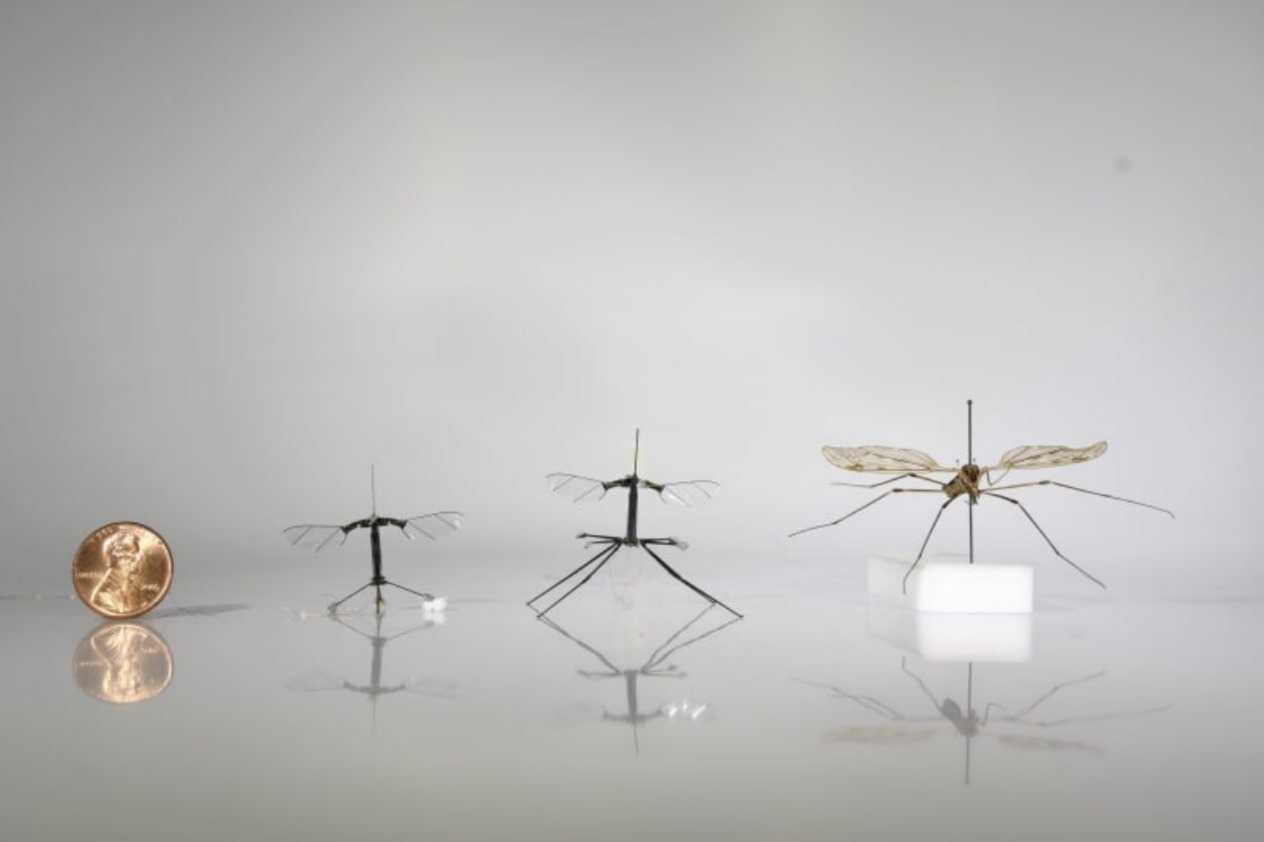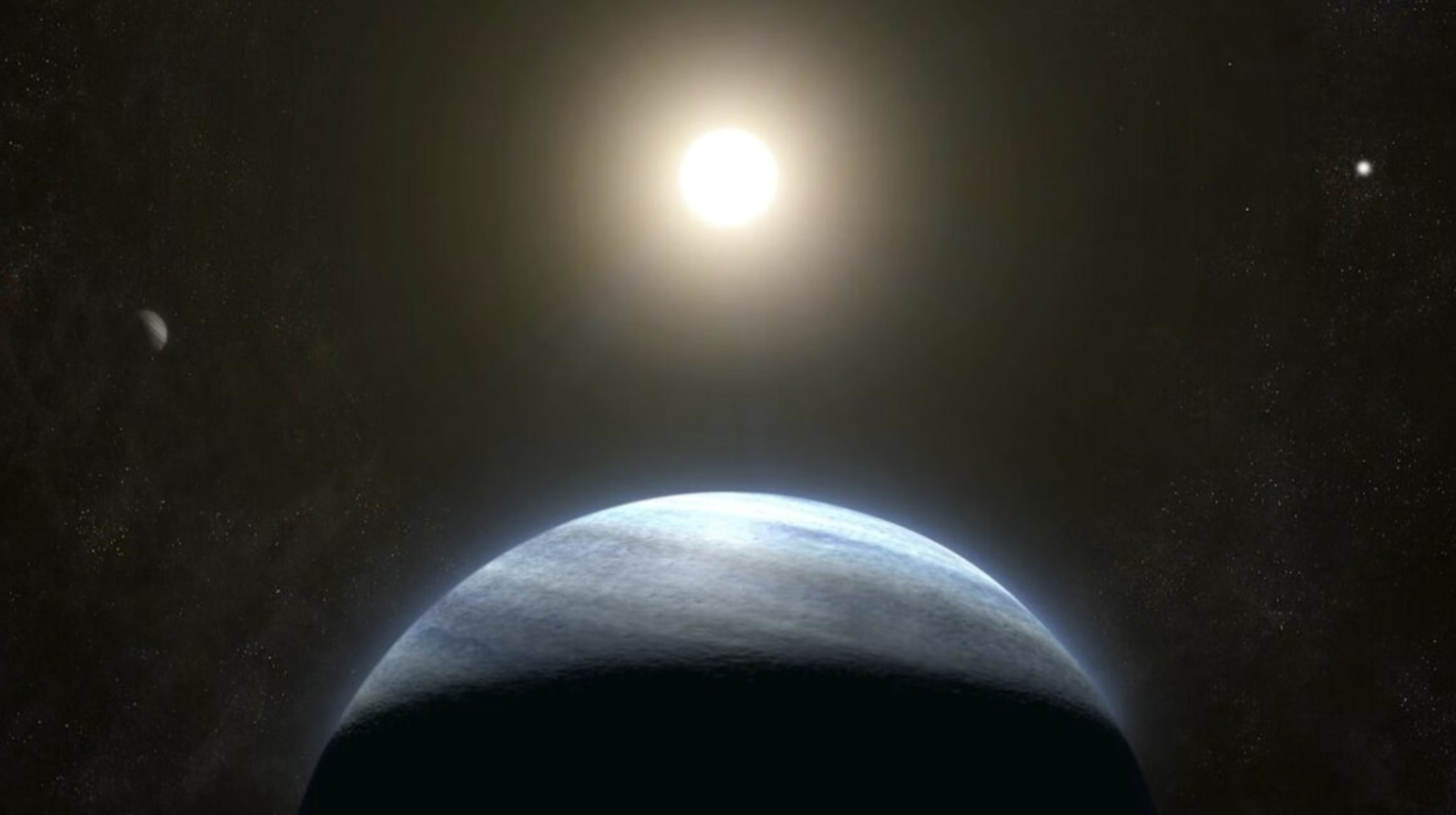Yet another “Black Mirror” episode is happening irl

A penny, an older version of the RoboBee, the current RoboBee, and a crane fly; Image: Harvard School of Engineering
After two decades of development, the RoboBee from Harvard’s Microrobotics Lab is almost ready for a full release, according to a new study. Soon to come: morbid online polls determining their next human target.
The specs: The RoboBee measures about half the size of a paper clip, and weighs less than one-tenth of a gram. It flies using artificial “muscles” that contract when a voltage is applied, with additional modifications allowing some RoboBee models to transition from swimming underwater to flying, as well as “perch” on surfaces using static electricity.
The lab hopes to use the tiny robots for environmental monitoring, disaster surveillance, and even artificial pollination to aid declining actual bee populations.
Harvard, we have a problem: In the past, researchers have struggled to engineer consistent, safe landings for the RoboBee due to how small and light it is. Previous iterations suffered from significant ground effect, or instability as its flapping wings drew closer to the landing surface.
- Scientists looked to the crane fly for inspiration in their most recent redesign, giving the RoboBee long jointed legs that help ease its transition from air to ground.
- The robot bug also received an updated controller that helps it plop-down gently upon landing rather than going full speed.
Looking ahead…While the RoboBee is currently tethered to off-board control systems, Harvard researchers’ long-term goal is for their bots to have full autonomy.
Share this!
Recent Science & Emerging Tech stories

Science & Emerging Tech
| April 23, 2025The UAE is using artificial intelligence to write laws
🤖 In a world first, the UAE last week unveiled plans to use artificial intelligence to help draft, amend, and review laws.

Science & Emerging Tech
| April 18, 2025OpenAI’s latest models are taking advice from moms everywhere
🤖 On Wednesday, OpenAI launched ChatGPT programs o3 and o4-mini, new AI reasoning models designed to pause and work through questions before responding.

Science & Emerging Tech
| April 18, 2025Scientists find strongest evidence yet of life on another planet
🪐 A team of researchers using NASA’s James Webb Space Telescope have found what they say is the most compelling evidence to date of extraterrestrial life, located ~120 light-years from Earth on a planet called K2-18b, per a new study.
You've made it this far...
Let's make our relationship official, no 💍 or elaborate proposal required. Learn and stay entertained, for free.👇
All of our news is 100% free and you can unsubscribe anytime; the quiz takes ~10 seconds to complete